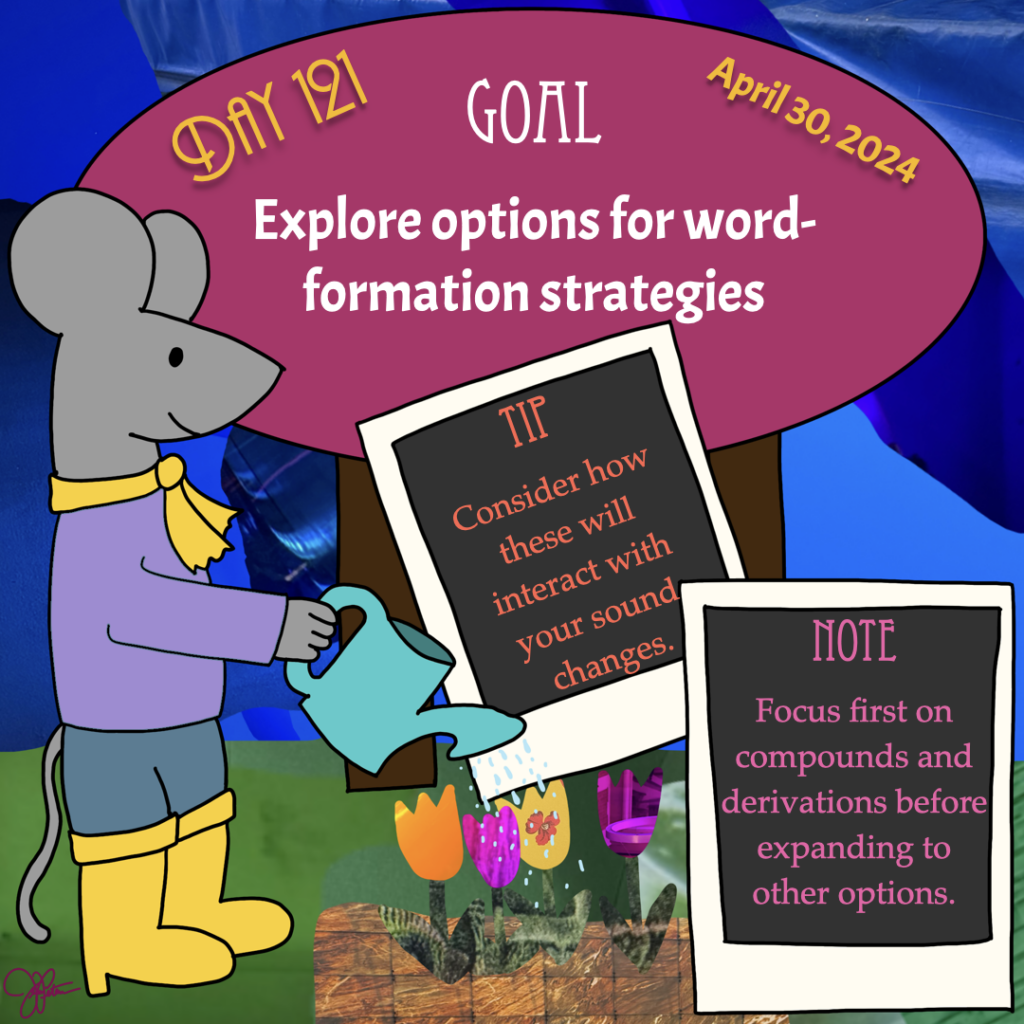
Goal: Explore options for word-formation strategies
Note: Focus first on compounds and derivations before expanding to other options.
Tip: Consider how these will interact with your sound changes.
Work focus: Learn/Brainstorm/Try
Today shifts the focus to word-formation strategies, specifically focusing on compounding and derivation (though others are possible, these are two that show up in most frequently and tend to be more productive).
Compounding involves combining two or more words to create a new word. Compounds can be split into two major types: endocentric and exocentric. Endocentric compounds have a head word that points to the overall meaning of the compound, like house in doghouse. Where the head word occurs in an endocentric compound often follows the headedness of the language in general. Exocentric compounds are more metaphorical or idiomatic, like forget-me-not referring to a flower or ne’er-do-well referring to a person. Their meanings need to be learned, even by native speakers.
Derivation involves affixation, where an affix changes the meaning of the root its added to, such as un- being added to the verb tie to create the verb untie. Some derivational affixes can also change the root’s lexical category, such as -ness changing the adjective happy to the noun happiness.
Use today to find ways languages use compounds and derivations to get inspired for what you might do in your own language. As you explore, also consider how compounds and/or derivations may interact with your sound changes (e.g. are compounds formed before, during, or after the sound changes are applied?). Modern forms can be quite different depending on whether compounds/derivations are formed before or after key sound changes.
As a side note, your causative may have been one of your first derivations, so you may have already begun a pattern of derivation for your language! (It depends on whether your language treats the causative as a clausal construction, inflection, or derivation.)
